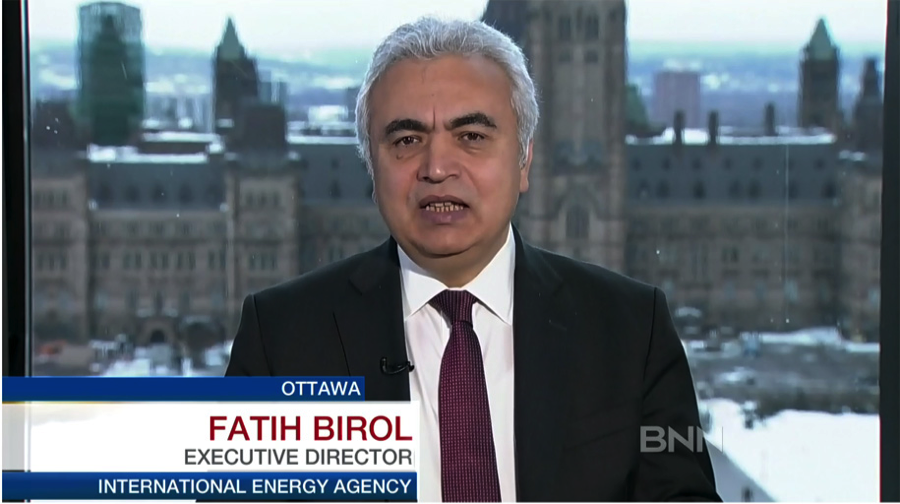Five Major BC LNG Projects: An Assessment Of Progress And Challenges

Table of Contents
Project 1: LNG Canada – Progress and Challenges
Current Status:
LNG Canada, located in Kitimat, is currently the most advanced BC LNG project. Construction is substantially complete, and the facility is operational, exporting LNG globally. Key milestones included the successful completion of the massive construction phase and the commencement of LNG production ahead of initial projections.
Key Challenges:
- Regulatory hurdles and timelines: Securing all necessary permits and approvals from various levels of government involved complex procedures and lengthy processes.
- Indigenous land rights and consultations: Extensive and ongoing consultations with First Nations communities were vital for securing support and addressing concerns related to land use and environmental impact. This included significant financial agreements and benefit-sharing arrangements.
- Environmental impact assessments and mitigation strategies: Rigorous environmental impact assessments were required, leading to the implementation of comprehensive mitigation strategies to minimize the project’s ecological footprint.
- Funding and investment challenges: Securing the substantial capital investment needed for such a large-scale project involved navigating global financial markets and attracting international investment.
Future Outlook:
LNG Canada's operational status indicates a positive outlook. Future expansion and potential additional phases depend on global market demand and pricing.
Project 2: Coastal GasLink – Progress and Challenges
Current Status:
Coastal GasLink is a vital pipeline project transporting natural gas from northeastern BC to the LNG Canada facility in Kitimat. Construction has faced significant delays and protests but is now largely complete.
Key Challenges:
- Indigenous opposition and protests: Significant opposition from some First Nations along the pipeline route led to legal challenges, construction delays, and heightened security measures.
- Environmental concerns: Concerns about potential impacts on wetlands and waterways necessitated stringent environmental protection measures and mitigation strategies.
- Construction complexities: Building a pipeline across challenging terrain and diverse ecosystems presented considerable logistical and engineering challenges.
- Cost overruns: Unforeseen challenges and delays resulted in significant cost increases.
Future Outlook:
While operational, Coastal GasLink's future is inextricably linked to the continued operation and success of LNG Canada.
Project 3: Woodfibre LNG – Progress and Challenges
Current Status:
Woodfibre LNG, a smaller-scale project located near Squamish, is significantly advanced in its construction phase. The project has a focus on reduced environmental footprint and community engagement.
Key Challenges:
- Permitting and regulatory approvals: Obtaining all necessary permits and approvals involved navigating complex regulatory frameworks.
- Environmental impact mitigation: Minimizing environmental impact, particularly on the Squamish River estuary, required innovative engineering solutions and robust mitigation strategies.
- Community relations and engagement: Building strong relationships with the local community was crucial to addressing concerns and ensuring the project's social acceptance.
- Financing and securing off-take agreements: Securing sufficient financing and long-term off-take agreements was essential for project viability.
Future Outlook:
Woodfibre LNG is expected to proceed to production, benefiting from its comparatively smaller scale and streamlined approval processes.
Project 4: Pacific NorthWest LNG – Progress and Challenges
Current Status:
The Pacific NorthWest LNG project, proposed for Lelu Island near Prince Rupert, is currently inactive and its future is uncertain. The project faced significant hurdles and was ultimately shelved.
Key Challenges:
- Environmental concerns and regulatory hurdles: Significant environmental concerns surrounding potential impacts on the ecologically sensitive Lelu Island led to protracted regulatory reviews and ultimately, project cancellation.
- Indigenous opposition: Opposition from local First Nations played a crucial role in halting the project's progress.
- Market conditions: Changing global LNG markets and pricing contributed to the project's economic unviability.
- Financing challenges: Securing the necessary funding proved difficult given the combination of environmental concerns and market uncertainties.
Future Outlook:
The project is currently considered inactive and unlikely to resume.
Project 5: Ksi Lisims LNG – Progress and Challenges
Current Status:
Ksi Lisims LNG, proposed for the Nass Valley, is still in the early stages of development.
Key Challenges:
- Indigenous consultation and agreement: Achieving broad consensus with local First Nations remains a significant hurdle.
- Environmental assessments and mitigation: Extensive environmental studies and robust mitigation strategies will be necessary.
- Infrastructure development: Significant infrastructure investment will be required to support the project.
- Market conditions and financing: The success of the project will hinge on favorable market conditions and securing sufficient funding.
Future Outlook:
The future of Ksi Lisims LNG depends on successfully navigating the significant challenges related to Indigenous consultation, environmental approvals, and securing financing.
Comparative Analysis of BC LNG Projects
Similarities and Differences:
All five projects face challenges related to regulatory approvals, Indigenous consultation, and environmental impact mitigation. However, they differ significantly in terms of size, location, development stage, and the specific environmental and social contexts they operate within.
Overall Progress:
| Project Name | Current Stage | Estimated Completion Date | Estimated Cost (CAD Billion) |
|---|---|---|---|
| LNG Canada | Operational | 2025 | ~40 |
| Coastal GasLink | Operational | 2021 | ~11 |
| Woodfibre LNG | Under Construction | 2024 | ~6 |
| Pacific NorthWest LNG | Inactive | N/A | N/A |
| Ksi Lisims LNG | Early Development | N/A | N/A |
Economic Impact Assessment:
The successful development of BC LNG projects holds immense potential for economic growth, creating thousands of jobs and generating significant revenue for the provincial economy. However, the economic impact of each project varies widely, dependent upon its scale, operational status, and associated infrastructure development.
Conclusion:
The five major BC LNG projects represent a complex interplay of economic opportunity, environmental concerns, and Indigenous rights. While some projects like LNG Canada are operational, others face significant hurdles or remain in early development stages. The success of these projects depends on navigating these challenges effectively, balancing economic development with environmental protection and respecting the rights and interests of Indigenous communities. It’s crucial to stay informed about the ongoing developments and discussions surrounding these ambitious undertakings. Stay updated on the latest news regarding BC LNG projects and learn more about their impact on BC's future. Follow the progress of these crucial BC LNG projects to gain a comprehensive understanding of their potential and associated complexities.

Featured Posts
-
 San Diego International Airport Flight Delays What You Need To Know
May 30, 2025
San Diego International Airport Flight Delays What You Need To Know
May 30, 2025 -
 Understanding Z Cars A Fans Guide To The Talking Pictures Tv Show
May 30, 2025
Understanding Z Cars A Fans Guide To The Talking Pictures Tv Show
May 30, 2025 -
 2025 Kawasaki Ninja 650 Krt Edition Launch Details And Specs
May 30, 2025
2025 Kawasaki Ninja 650 Krt Edition Launch Details And Specs
May 30, 2025 -
 25 Mal Fra Dolberg Evaluering Af Et Potentielt Chokskifte
May 30, 2025
25 Mal Fra Dolberg Evaluering Af Et Potentielt Chokskifte
May 30, 2025 -
 How Much Do Glastonbury Resale Tickets Cost Dates Announced
May 30, 2025
How Much Do Glastonbury Resale Tickets Cost Dates Announced
May 30, 2025
